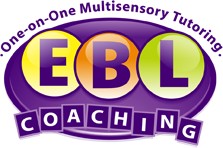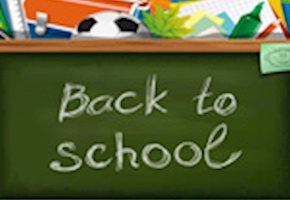In a perfect world, all children would enter school with an innate knack for organization. They would be able to manage their homework, maintain a perfectly clean backpack, and file their lose papers on a regular basis. Yet unfortunately we don't live in an ideal world. In reality, most students are far from perfect in their ability to manage their school work and belongings. They need guidance for developing effective organizational skills, an area that becomes increasingly important as students progress through school. Help your child become more organized with these three valuable and practical strategies:
The Assignment Book
We often hear complaints from students about not wanting to use a planner since their assignments are posted online or they can "easily" remember them without writing anything down. Yet even if assignments are posted online, students should still actively use an assignment book so that their entire agenda is written in one place and they can see the "big picture" of all that needs to get done. Ideally, your child should use a “one sheet per day assignment book” with ample space to write down each assignment.
During the school day, encourage your child to write down assignments as they are given out. Then, when she gets home that afternoon, have her look at all of her assignments and predict how long she thinks each one will take. She should write down the ET (Estimated Time) next to each assignment and, based on these times, decide which ones she will do first, second, third, etc., and complete them in that order. Finally, after she has completed each assignment and put it in the right place to be turned in, she should cross it off and write the AT (actual time it look to complete). This strategy will help students develop time management, homework management, and planning skills.
The Binder
Some students might prefer using an open-style three-ring binder for carrying papers to and from school. Yet this kind of binder can lead to disaster (namely the disappearance of critical papers and assignments), particularly for those who are not naturally organized. Rather than using a completely open 3-ring binder, purchase a fully enclosed binder for your child that has a zipper and a handle. With this style binder, if your child drops it, nothing will spill out.
Inside the binder, purchase a colored folder containing two pockets for each subject that is made of hard plastic, not flimsy paper. Create a white label with the subject name on it to stick on the outside of each folder. Inside the folder, on the left side, attach a sticker labeled "to be done" and on the right side, attach one labeled "completed/returned."
In the front portion of your child's binder, attach two monthly calendar sheets so that your child can see all upcoming long-term assignments. The current month should be placed on top, and the next month should be placed underneath. This setup will help him see a global picture of upcoming assignments and tests for the next two months.
The Filing System
Rather than watching an ever-growing mess of papers stack up on your child's desk or inside his backpack, help him establish an effective at-home filing system. Purchase a filing box for your child that is the size of an egg crate, without a top. Use box board bottom file folders with tabs - one per class, ideally in a color matching that of the subject folders in his binder, and label each tab by subject. Place plain manila file folders (one for each month of the school year) inside each file folder, so that each box board bottom file folder has its own set of monthly folders.
Designate one day per week as a "clean out my binder" day, where your child cleans out sheets from the right side of each folder in his binder (labeled "completed/returned"). These should be papers that he does not need to be carrying with him on a regular basis, and they should be placed in the proper monthly file, a task that should take roughly 5-15 minutes. When his teacher announces a test, he should pull out all papers from the start of that unit (from the at-home filing system) to use for studying.
Try implementing these strategies at home and your child will soon become more organized, learn effective time management strategies, and become an overall better student. As an added bonus, you'll find that your life will become easier by not having to micro-manage your child's school work, an all-out winning scenario.
Written by Dr. Emily Levy, Director of EBL Coaching
Dr. Emily Levy is the founder of EBL Coaching, a tutoring program that specializes in one-on-one home and on-site instruction for students in grades preK-12 in NYC and NJ. She is also the author of Strategies for Study Success, a study skills workbooks series emphasizing test taking, note taking, reading comprehension, writing, and summarizing strategies, and the Flags and Stars Orton Gillingham student workbook series. These workbooks are currently used at schools nationwide.
Dr. Levy studied at Brown University and later received her Masters Degree in Special Education and her Doctorate Degree in Education. She has spoken at national and international conferences on research-based methods for teaching students with and without learning disabilities. Dr. Levy is currently the Director of EBL Coaching's NYC and NJ learning centers.
EBL Coaching
50 East Palisade Avenue, Suite 201, Englewood, NJ 07631







Add A Comment
Thank you for your comment.
Sorry! There was a problem with your comment submission. Please try again.
Comment
Allowed HTML: <b>, <i>, <u>, <a>
Comments
Thank you for your comment.
Sorry! There was a problem with your comment submission. Please try again.
Thank you for your comment.
Sorry! There was a problem with your comment submission. Please try again.